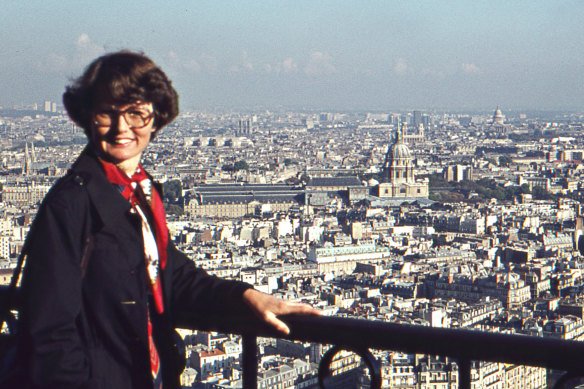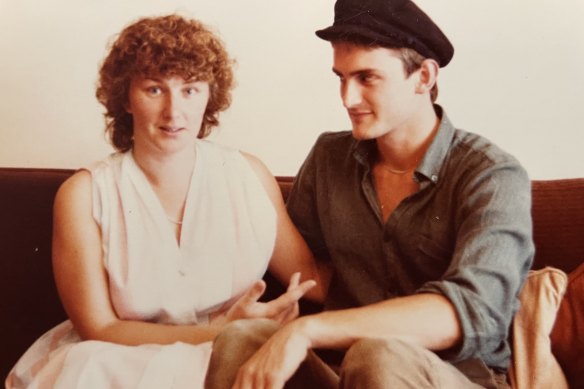The blemish-free photo has arrived. Take a group shot using Google’s latest phone, capturing a dozen shots of the same scene, and the technology will create a merged image, allowing you to choose the best elements of each shot.
If your young nephew is scowling in shots 1 until 11, then briefly manages a smile in shot 12, that will be the image of him suggested for use in the merged photo. Meanwhile, old Uncle Harry was fiddling with his crotch in all but shot 2, so it’s that Harry who will be preserved for all time: the polite one, of only momentarily so.
Your family, so hilarious in its dysfunction, chaos and colourful variety will be rendered normal. Is this progress?

Our old photos might not have been pretty, but at least they captured the reality of life.Credit: iStock
As usual, reality is increasingly being hustled from the stage. First it was the professional school photographers, who – from the early 2000s – began removing pimples, scowls and even orthodontic braces from the children of parents who were willing to pay extra. In middle-age, these people will look back at their school photo and wonder why they remember adolescence as such a misery, when the photos capture such an untroubled, happy scene.
At least my school photo, taken in the 1970s, captures the reality. Yes, I’m scowling, but the reasons for that unpleasant scowl – the pimples, the orthodontic braces, the sticky-out ears and the poo-coloured school uniform – are also on display. The photo, in other words, aligns perfectly with my memory of those difficult times.
Already, digital photography allows us to take a blizzard of shots, choosing the one that happens to catch us looking vaguely human. Even the “vaguely” can be removed with the right Instagram filter, or some assiduous editing.
If we make our past look perpetually perfect, how are we to put up with the present?
It’s no wonder that looking in the mirror is now such a dispiriting experience. We don’t look anywhere near as good as our friends – not when our friends are viewed as we mostly view them, via their social media feed. We don’t even look much good when compared to ourselves – assuming the point of comparison is our carefully curated shots of ourselves.
Go back a few decades and it was the opposite. Most people looked better than their photo. You’d meet an elderly relative – one you’d previously only seen in a snapshot - and be pleasantly surprised. “Actually, to be honest, they look relatively normal.”
These days, only by glancing at your passport photo or driver’s licence do you have the chance to think: “Well, at least I’m not as weird looking as that person.”
There’s a lot to miss about the old days of film. You’d take 12 shots or 24, aware of the cost each time you pressed the button, then take them to the chemist and wait a week to discover the result.
The results might not be pretty, but at least they captured the reality of life. The drunk neighbour would look drunk. The sullen teenager would look sullen. The yawning, exhausted mother would, well, be caught yawning and looking exhausted.
Another advantage: there was no possibility of troubling others with photos of your own sexy bits, even via the post. Everyone knew the local chemist would have a good rummage through the photos before handing them over, so everything needed to be kept above board.
In some suburbs, even a bikini was enough for the chemist to refuse to hand the resulting filth. “The whole reel was blank, you must have exposed the film,” is the explanation that would be given.
Maybe I’m overly sensitive about the airbrushed world. Each Friday, we invite a live audience to see part of our radio show. The segment is performed in a small theatre, the backdrop of which is an airbrushed photo of yours truly.
First, the photo was taken ten years ago. Second, they’ve done some work on it. Each week, I’m required to stand in front of this optimistic version of myself, while the audience draws its own conclusion. It’s like a reverse version of Oscar Wilde’s The Picture of Dorian Grey, in which I’m the painting in the attic.

Jocasta’s 1980s perm attracted many a Greek sailor, including your columnist.
Photos were always recommended as a way of preserving memories, but what does that mean now that Google preserves a moment that never actually existed, even for a second? A moment in which everyone is simultaneously smiling, and looking forward, with eyes unblinking, and shoulders back?
Aren’t the blemishes part of the memory, the chaos of corralling the group – remembering the naughty nephew who insisted on giving his sister rabbit ears, or the day-dreaming grandfather who decided to look upward and check-out the clouds at the crucial moment, or the toddler who decided the time was ripe for sobbing?
If we make our past look perpetually perfect, how are we to put up with the present?
When I look through those old photo albums – filled full of images of Jocasta and her 1980s perm, or me in the Greek sailor’s cap which I imagined made me look good, or the kids defiantly refusing to smile, largely because I’d begged them to – well, it makes me realise the present is not so bad.
Sydney Morning Herald subscribers have the opportunity to attend an exclusive Q&A event with Richard Glover on Tuesday, October 31 at Hayden Orpheum. Click here for more details.
Find out the next TV, streaming series and movies to add to your must-sees. Get The Watchlist delivered every Thursday.
To read more from Spectrum, visit our page here.